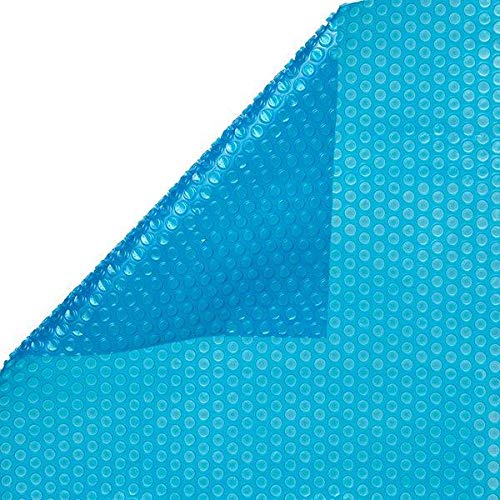You want your pool area to be a backyard paradise. Trees and landscaping often enhance your yard and pool. However, there are certain trees that you’ll want to avoid putting near the pool. Steer clear of these 30 trees to help keep your pool maintenance to a minimum.
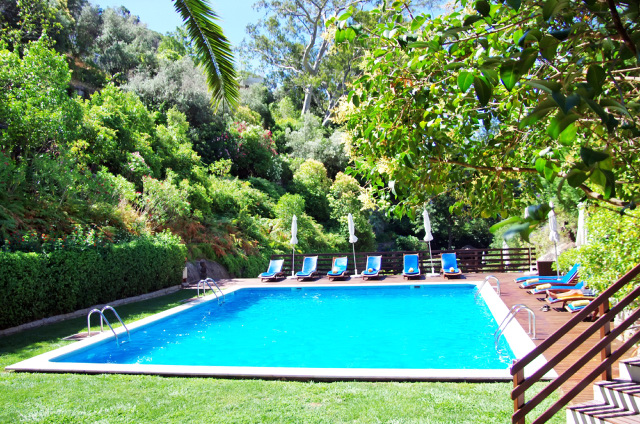
Article Contents
Judging Criteria
How did these trees make our list? We judged these trees based on the following factors: root systems, staining factors, insects and other pests, leaf and branch shedding, and pump filtering capabilities.
Many of the above factors can cause issues for pools.
If you want a list of what you can plant around your pool, check out this list: 25 of the Best Trees to Plant Around a Swimming Pool
Let’s get into our list of trees to avoid around your pool area.
1. Mulberry
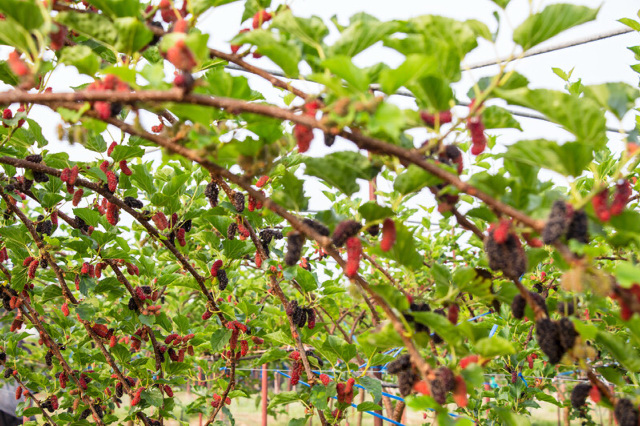
This one makes the top of the list because it hits several of our judging categories.
Roots: Mulberry trees have an extensive root system and can cause damage to your underground plumbing and to your inground pool foundation. It can also cause issues for above-ground pools if roots grow under your pool and poke through the liner.
Berries: Mulberry trees also have fruit that leaves stains everywhere. You don’t want to look at that on your deck or patio.
Pollen: As if the berry and root issues weren’t enough, Mulberry trees have high pollen counts. So, watch out if you have seasonal allergies!
Insects: Because of the high pollen count, these trees attract silkworms. You’ll have an increase in insects hanging around your pool area with this tree.
2. Cottonwood
Roots: Cottonwood trees have shallow root systems that can cause damage to sidewalks, driveways, and patio areas. They tend to seek out moisture, which makes your pool very attractive!
Cotton: The female variety of this tree have cotton-like seeds that can blow into your pool, causing debris in the pool and possible filter or pump clogs.
3. Aspen
Roots: Aspen trees, like Mulberry trees, have vast root systems that can cause damage to underground plumbing or electrical. If the roots grow near your pool, you can get bumps under the liner. Not only will it hurt if you step on these, but it increases your chance of a puncture or tear in the liner.
4. Willow
Roots: Willow trees are another species with root systems that can cause damage. Willows are attracted to water sources and will eventually find your pool water if they’re planted nearby.
Insects: Willow trees do not attract birds, but they do attract insects. Without birds to help control the insect population, you may have unwanted pests around willow trees.
5. Crape Myrtle
Flowers: These are beautiful to look at in your yard. But placing one close to your pool can be a nightmare. The small flowers can get into the pool and clog the skimmer. If the flowers sink to the bottom, they are often so light that an automatic pool cleaner will not pick them up.
6. Leyland Cypress
Branches: This cypress tree gets very large and can be a tempting option for shade and privacy. However, it often gets too large to be near homes because it’s susceptible to wind damage. You definitely don’t want branches (or a large section of the tree) to end up in your pool.
7. Ash
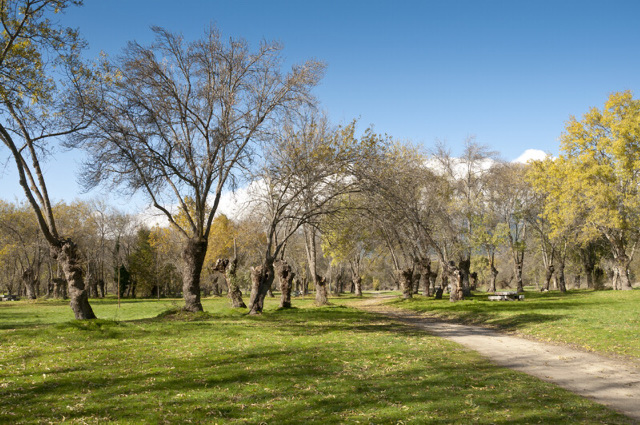
Roots: Ash trees have root systems that are about as wide as the branches. Their roots can be aggressive. If planted too close to pools, it can damage the liner or pool walls.
8. Tulip Tree
Branches: These trees have brittle bark, and the branches will fall off during winter.
Sap: During the summer, these trees produce a sticky sap that can be a nuisance to deck and patio areas.
Flowers: In the springtime, tulip trees produce flowers that will fall into the pool.
Leaves: You’ll be dealing with cleaning up leaves during the fall. If they end up in the pool, the leaves will sink to the bottom and clog up your pool vacuum.
9. Azalea
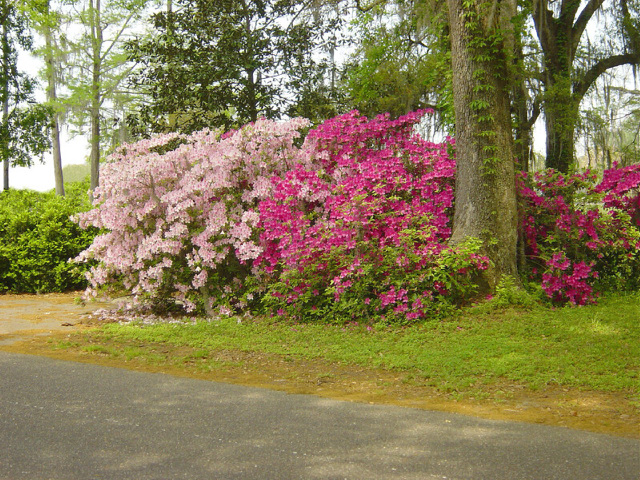
Flowers: While Azaleas can provide a colorful addition to your backyard, the flowers can make a huge mess for your pool. The Azalea will also lose its leaves in the fall, creating another potential clean-up for you.
10. Silver Maple
Roots: Silver Maple trees have very shallow root systems that live just below the dirt. The trees are attracted to water sources and will spread towards any moisture they can find.
11. Acacia
Flowers: The Acacia can grow as a shrub or tree. It has flower clusters that release and spread very easily. The flowers will end up all over your yard and in your pool.
12. American Elm
Roots: The American Elm tree is another one with aggressive root systems that seek out water.
13. Oak
Roots: Oak trees also have a very large root system that can cause damage to your plumbing.
Leaves: In addition to the roots, Oak trees will drop lots of leaves onto a deck or patio area. The leaves get heavy when they’re wet, so if they get into the pool, they can be harder to get out.
14. Honeysuckle
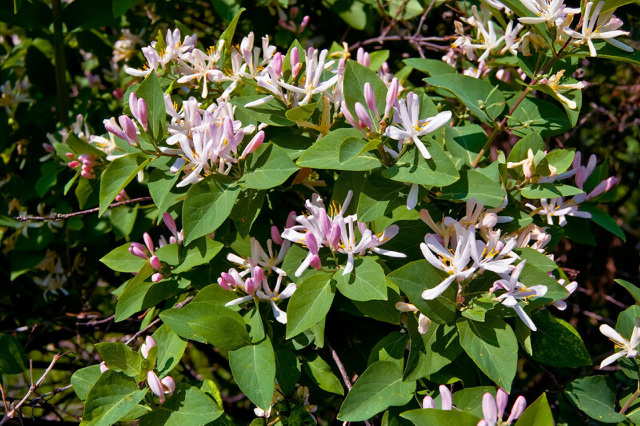
Flowers: The flower petals fall off easily and can litter your yard and pool area.
Insects: Because of the sweet smell of the flowers, honeysuckle tends to attract bees.
15. Bottlebrush
Flowers: Bottlebrushes can provide a lot of privacy as they grow into dense hedges. But they produce red needle-like flowers that scatter very easily.
16. Eucalyptus
Flowers: When Eucalyptus trees lose their flowers, they can leave a rust-like stain on your patio.
Bark: These trees also shed their bark and cause leave extra debris around the pool area.
17. Bamboo
Leaves: Bamboo grows quickly and can spread, so keeping them contained to specific locations can be a bit tricky. Bamboo will shed its leaves and create a mess in the pool water if planted nearby.
18. Gingko Biloba
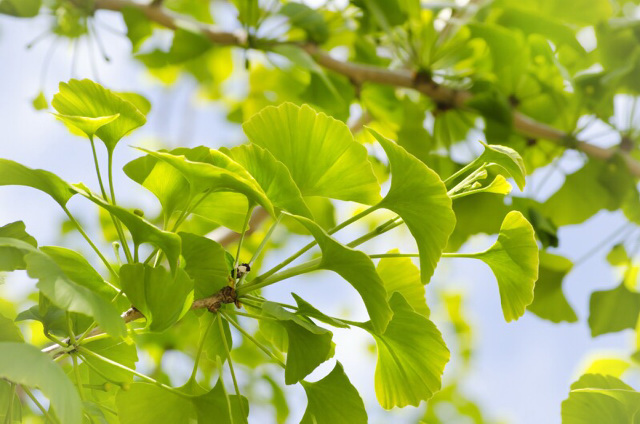
Fruit: The fruit from these female trees will scatter throughout your yard and pool area as it falls from the tree. The fruit doesn’t have a pleasant smell to it either. If you’re interested in this tree, stick with the male, non-fruit-producing trees.
19. Cacti
Roots: The roots of a cactus plant are drought resistant. Too much water can actually be harmful or kill the cactus plant. If you’re planting a cactus, you’ll want to make sure it’s far enough away to not get splashed regularly from the pool.
Thorns: Cactus plants have very sharp and painful spines that can poke pool visitors if they get too close.
20. Hard Yucca
Thorns: While yucca doesn’t actually have thorns, its leaves are pointy and can be very sharp to the touch. This is another plant that you will want to make sure your pool guests don’t brush up against accidentally.
21. Poplar
Roots: Poplar trees are fast-growing and can have extensive root systems. The roots can often be invasive and can cause damage to concrete pools or patio areas or to underground plumbing.
22. Walnut
Nuts: Since walnut trees produce nuts, you don’t want these close enough to the pool that the nuts can fall in. It will create extra cleaning with a surface skimmer to remove floating objects and a vacuum to remove the ones that sink to the bottom. Walnuts can also cause filter problems if they get past the skimmer.
23. Pyracantha
Thorns: Pyracantha is another species that has sharp points. In addition to being painful if anyone runs into them, the spiky ends can also damage pool inflatables.
24. Cherry
Flowers: Cherry trees drop flowers that are very lightweight. So, wind can carry them into your pool even if the tree isn’t right next to the pool area.
Fruits: If you have fruit-producing trees, they can attract birds and insects. Be mindful of the proximity to your pool for both fruit clean-up and pest control.
25. Chinese Holly
Thorns: Holly is another prickly species that can be uncomfortable if someone gets poked by it. Keep decorative holly far enough from the pool area so it’s out of the way of swimmers.
Berries: Holly also produces berries that can fall off and end up in the pool.
26. Hickory
Nuts: Hickory trees are another nut-producing species that can litter the pool.
Leaves: These trees also lose their leaves in winter and can add extra clean-up in the off-season.
27. Pear
Branches: The wood for pear trees is very soft. These trees tend to have increased breakage, especially with wind or ice present.
28. Bougainvillea
Thorns: While the flowers of the bougainvillea can be very pretty to look at, there are thorns that can make these less attractive to have near the pool.
Pests: Due to the thick, vine-like way that these grow, they often make good nesting areas for rats or other rodents.
Leaves: Bougainvilleas will continually drop leaves and flower petals in your pool. Whilst they don’t affect the pool or stain, they do make a mess and clog up skimmer baskets.
29. Dwarf Arborvitae
Leaves: While the arborvitae is evergreen and doesn’t shed like other types of trees, the leaves from these can create quite a mess if they get into the pool. The leaves are very needle-like and can clog pool filters.
30. Birch
Roots: Birch trees have extensive root systems. They spread very wide and can be very large. In addition to concrete damage, these roots can cause plumbing issues with underground pipes as well as liner damage if the roots get underneath the pool.
Branches: Birch trees drop a lot of branches. You’ll have a variety of sizes that fall from these trees. While the small branches mostly provide a nuisance and extra clean-up, the larger branches can cause damage to items they may land on. Larger branches can also cause damage to your pool liner if they land near the pool’s edges.
Leaves: The leaves of birch trees are small but there is an abundance of them! They make a mess not only in the fall when the leaves are supposed to fall but, in the spring, and summer if there are any storms or high wind. Expect to have a lot of clean-ups if you have one of these near your pool.
Sap: As if we haven’t said enough about birch trees yet, they also produce a sap that is incredibly sticky. It will end up all over your pool and patio area and it’s a huge mess to clean up.
What if I Already Have These Trees in My Yard?
Now that you’ve read through this list, you may be asking yourself what you should do if these trees are already in your yard. You may not want to or be able to remove these trees. But how can you avoid the headaches that these trees can cause?
Here are some items that may make cleaning up a bit easier.
Leaves/flowers: Try covering your pool with a solar blanket. Not only will this help keep leaves out of the pool but if trees shade your pool area, this might help to warm the water.
If you want an easy pool clean-up but don’t want the warming feature of the solar blanket, try a leaf net. They make them for above-ground or in-ground pools.
You can also use a larger skimmer net to try to remove debris from the surface of the water.
If you have a pool vacuum, a leaf canister might be a good addition to help trap larger debris.
Consider using an automatic pool cleaner to help keep things clean without you having to do it all.
Stains: If you have stains on the concrete patio area, you can use chlorine shock to remove the stains. Sprinkle on the affected areas and do some light scrubbing.

